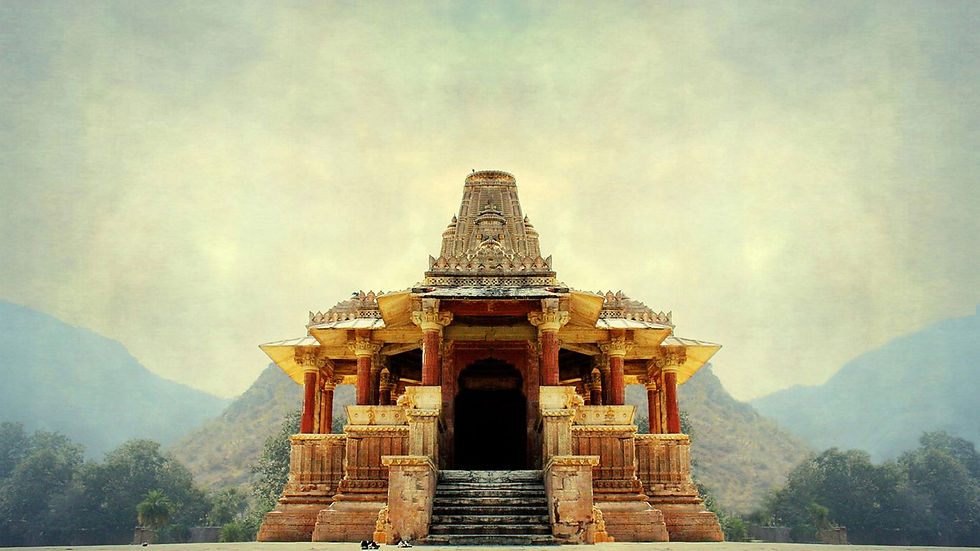Leaping Tiger Gorge - Grand Canyon of China
- jakson mithail

- Aug 24, 2020
- 3 min read

If you want to experience China's rugged wilderness and witness stunning natural scenery, a hike down Leaping Tiger Gorge is for you. Leaping Tiger gorge is an enormous canyon on the world's third largest river and China's most important river, the Yangtze River.
The gorge is roughly 18 kilometers in length, runs from the south west to the north east and is a staggering two kilometres deep in some parts. The canyon is formed when the Yellow River runs between the Jade Dragon Snow Mountain (height 5596 meters) and the Habaxueshan Mountain (height 5396 meters). In terms of depth of the canyon and the height of the canyon walls, the Leaping Tiger Gorge rivals the Grand Canyon.
The gorge is 60 kilometers north of the picturesque Lijiang city in Yunnan province in the west of China. The gorge has immense natural beauty, extensive biodiversity and is a part of the "Three Parallel Rivers of Yunnan protected areas" world heritage site.
The local name for the river as it runs through the gorge is the Golden Sands River (Jingsha) so don't be confused if it is not referred to by locals or on maps as the Yangtze river. Same river, different names.
The name and story
In ancient times a tiger was fleeing from a hunter and escaped by leaping across the gorge at the narrowest point (25 meters wide). The tiger managed this leap by hopping on a rock. A rock that is now called leaping tiger rock and a major attraction for Chinese tourists
The gorge layout
The map which clearly shows the sections of the gorge, the trails, land marks and hiking times. This is one of the best maps you'll find for the gorge with most maps being hand drawn.
The upper or 1st section of the gorge is at the mouth of the canyon where the river enters the gorge's narrow walls. This point is the narrowest and highest. This is the part of the gorge that contains the leaping tiger rock. In the middle or 2nd stage of the gorge the river drops 100 meters and the flow increases.
In the lower or 3rd stage of the gorge the flow of the river is the fastest and the cliffs there are steeper and more dangerous than in the other part widest river in europe.
The two trails
There are two trails through the gorge, the upper trail that runs along the top of the gorge and the lower trail that follows the course of the river at the bottom of the gorge. These two trails are very different and suited for different types of tourist so read up on them carefully to work out which one you'd choose before you enter the gorge.
The upper Trail
This trail is on the north side of the gorge, is 22 kilometers long and is the tral that provides the most amazing views and extreme experiences. With an average elevation above sea level of 2,700 meters and an average height above the river of 1,000 meters, the views are just awesome. The trail narrows down to a width of 20cm in some parts and looking down is a great adrenaline rush.
The upper trail is also the trail that is the most strenuous, dangerous and requires a minimum level of fitness and ideally some trekking experience. Don't worry too much though about doing the upper trail. If you are in reasonable shape, you can complete the trail by taking your time, having frequent rests and spending a few nights in the gorge itself at the guest houses that scattered along the trail. The hardest part of the trail is the first part where you climb a series of 28 switchbacks that are clearly visible on the map.
This trail has a variety of micro ecosystems that will change as you progress along it and it also has a number of waterfalls that make refreshing pit stops. Just about all Chinese tourists take the lower trail so you'll find this trail is peaceful and secluded. The people who mainly use this trail are foreigners and local Naxi. I've heard that you'll see groups of hikers roughly once an hour.
The hike on the upper trail takes 1.5 to 3 days to complete with 2 days being the norm. The prices of the guest houses on the trail range from around 20RMB for the cheaper dormitories to 150RMB for the more expensive double rooms.
Lower Trail
This trail is easy, flat and boring. Very few people actually hike it with most people taking a bus down this trail. This trail is very popular with Chinese tourists. Unlike the upper trail which follows the cliff, this trail follows the river so you at least have more views of the river. At ground level not one kilometre up!







Comments